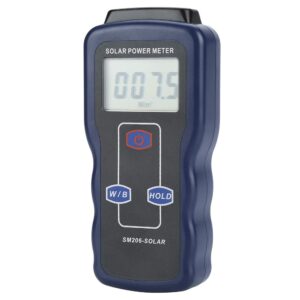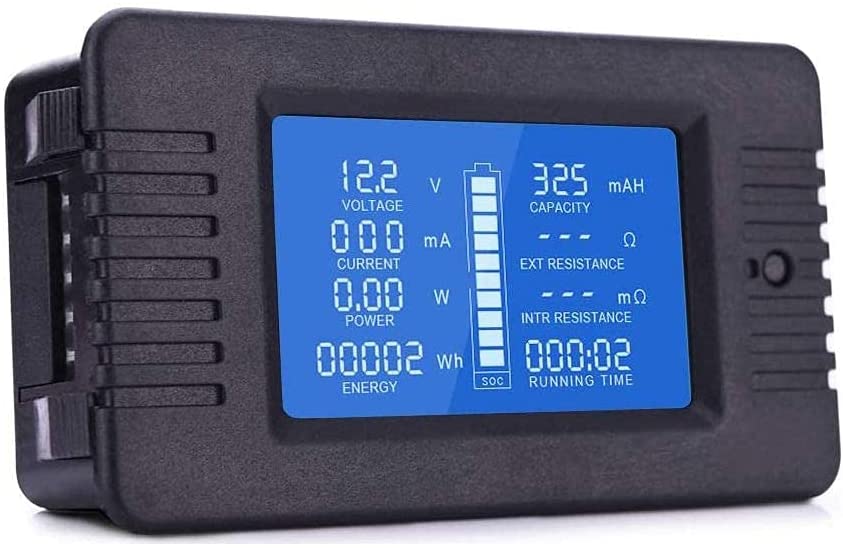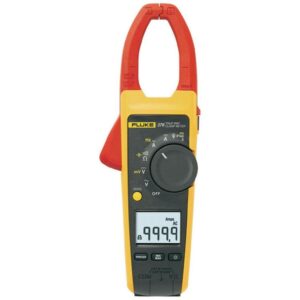It’s closer than it seems. Off Grid Christmas Wish List.
We live in strange times. With many products out of stock and long lead times for the stuff you can get, it’s not too early to think about what you’d like to give (or get) for Christmas. An off grid ham’s Christmas wish list probably doesn’t look like the average persons’, but that’s ok, we understand each other here. This seems like a good time to go through a few of the most popular items that off grid amateurs ask about and figure out what’s worthwhile and what’s not.
This is by no means a comprehensive list. Feel free to add your ideas in the comment section.
Multimeter. Off Grid Christmas Wish List.
What is it? A device that measures AC/DC voltage, current, resistance, and other electrical properties.
Do you need one? Absolutely yes!
Why you need one. The multimeter is the most fundamental instrument in any ham’s toolbox. From testing batteries to troubleshooting complex circuits, the multimeter is your best friend. They come in analog and digital versions. You probably need more than one multimeter, but if you can afford only one, get a digital. No one can be taken seriously as ham if they do not own this must-have instrument.
Pro tip: Take a pass on “sounds too good to be true” junkers sold at a stores famous for cheap throwaway tools. Use your head…you’re not going to get a worthwhile multimeter for six bucks! A good multimeter will run from about $50.00 USD up to several thousand dollars. Very respectable units for ham purposes run in the $50-$200 range. Don’t settle for low end crap. Check out previous Off Grid Ham articles about multimeters here and here.
MC4 crimp tool. Off Grid Christmas Wish List.
What is it? A handheld tool for crimping MC4 connectors on solar panel power cables.
Do you need one? Maybe.
Why you might (or might not) need one. If you are satisfied with you system and don’t have any plans to expand or change it, or you are ok with paying more for pre-made power cables for your solar panels, then you have no use for this tool. If you do your own solar power work, then yes you need an MC4 crimp tool. With it, you can easily and inexpensively make cables to your exact needed length.
Pro tip: This is one situation where you have my permission to buy the least expensive tool out there. The difference between the $15.00 and the $200.00 MC4 crimp tools is not meaningful to the average hobbyist. The higher end models may have interchangeable crimp dies and heavier construction, but unless you are a professional who uses it every day, that’s overkill. I get by just fine with a cheapie and you can too. Here is a previous Off Grid Ham article about MC4 connectors and associated tools.
Solar power & radiation meter.
What is it? A handheld electronic device that measures solar radiation, light, and power levels in BTUs, watts per square meter, and sometimes other units. Basically, it’s a glorified light meter.
Do you need one? No.
Why you don’t need one. A solar radiation meter is the kind of device you will use one time. Five years later when you find it buried in the back of a cabinet with the batteries leaking you’ll wonder, “why did I buy this?”. They are mostly used in energy research, agriculture, and industry. While solar power meters are useful for determining how much sun your ham station is getting, once you’ve done that it’s no longer needed. Furthermore, for most of us, knowing how much sun we have doesn’t get us anywhere.
Pro tip: If you absolutely must know solar power & radiation levels, consider splitting the cost of the device with a friend who is similarly obsessed with minutiae. When you are done with your data collection, sell the meter as a used unit and recoup some of your money.
Battery monitor.
What is it? A passive device that connects to your off grid power system. It displays current, voltage, wattage, and other electrical parameters.
Do you need one? Yes.
Why you need one. A battery or power monitor is like a dashboard that displays all kinds of useful data about your off grid system performance. They look cool too! But they aren’t just for bling. These practical devices can help you plan power consumption and warn you of unacceptable conditions, such as overcurrent and low battery. They are small & compact enough even for portable applications. Battery monitors are very affordable, running in the $10.00-$75.00 USD range. There is almost no good reason not to have one.
Pro tip: Battery/power monitors in the price range most hams can afford are not well made and should not be considered long-term investments. However, because they are so inexpensive, replacing one is not a big deal. Stocking a few spares is within reach of even tight budgets.
Antenna analyzer.
What is it? An instrument that measures and displays antenna characteristics including impedance, resonant frequency, bandwidth, and other attributes.
Do you need one? Maybe.
Why you might (or might not) need one. If you’re big into antenna building and experimenting, or often help others with their antennas, then it’s a no-brainer. You must have an antenna analyzer. After that things get a little fuzzy. Almost every amateur has a use for one on some level, it’s just a matter of whether the use you’ll get from it rationalizes the cost. Antenna analyzers are fairly expensive, with good ones starting around $200.00 USD and going up from there. We’ve come a long way from the old school dip meters of days past. Antenna analyzers can produce a wealth of detailed technical data about antennas & feed lines, saving hours of guessing and frustration. Everybody who owns one (including me) loves it even if they don’t love the price tag.
Pro tip: If you belong to a radio club, lobby for the club to buy an antenna analyzer and make it a club asset to be borrowed by members as needed. Otherwise, if you can’t justify the cost of having your own, there’s always a ham somewhere that will lend you theirs. Ask around at hamfests, club meetings, and on the air. Older generation devices are available on the used market for reasonable prices.
Clamp ammeter, or “amp-clamp”.
What is it? A multimeter that has a spring loaded clamp for inductively measuring current without physically connecting to the circuit. Clamp ammeters are most often used in high power industrial applications where directly measuring current is unsafe or not practical.
Do you need one? No.
Why you don’t need one. Clamp ammeters are a specialty tool that does not have a lot of utility in off grid ham radio, yet I run across a lot of hams who think they need one. Like most test instruments, good ones are expensive. I have two amp-clamps and use them for non-ham related projects, but were it not for that I would not own one just for radio. If you already own a decent multimeter, there’s not much a clamp ammeter can offer beyond that. Lastly, amp-clamps do not have the accuracy and resolution hams need.
Pro tip. If you decide to get an amp-clamp, get one that measures both AC and DC current. Most of them will only do AC so read the fine print. Used clamp ammeters are fairly easy to find at swap meets.
What do you think?
This list could go on and on; I picked out just a few of the items most often asked about. What is on your wish list, and have you thought about whether or not you really need these things? Of course, there are needs and wants. There is nothing wrong with indulging yourself in a little vanity once on a while, but before you plop down good money on anything, think real hard about the use you will get out of it versus the cost.
Please leave your ideas in the comment section.



I have on hand and use pretty much of everything on your list except for the antenna analyzer and MC4 crimper. One day I may need the crimper but haven’t yet in 14 years being off grid.
What do I/we really want for Christmas? Our very own Dishy McFlatface. I’ve been patently waiting since Feb of this year. We already have bird baths made from previous satellite internet companies and can’t wait to add Hughes to the collection.
It’s always good to hear form you JR. Satellite internet is a little outside of my area of knowledge, so I wish you the best on that one.
i have always been interested but i know nothing about this .. where can i get a cheaper unit ? so i can just start out ? in the oregon area . is there books at the liabriay or anyone in the oregon area ?
Hello Lee, can you be more specific as to what type of “unit” you are referring to? I’m sure someone here in Off Gritd Ham land can help you out.
How about one of those lifts that they use to trim trees? Damn, that would be nice for hanging antennas or even serve as an antenna platform by itself. But let me be serious. Here’s a few things to consider that are on the cheap side.
A nanovna network vector analyzer. They’re interesting little gadgets that can handle most of the chores of antenna and feed line testing, plus a lot more, and you can get one for less than $100, often down in the $40 range. The problem is that there are dozens of different models, all apparently the same, cranked out by Chinese manufacturers who provide no support, no documentation, no software, no nothing, You’re on your own to try to find tutorials and necessary software. I’m going to pick one up just for the heck of it one of these days just to play with it and see how it works.
A *good* set of screwdrivers for electronics with bits that actually fit. A lot of cheap drivers don’t actually fit real world screws. Plus there seems to be an ever increasing number of different types of screw heads these days. I picked up a screwdriver set with a couple of dozen different types and sizes of bits from ifixit including a lot of specialty bits that works well. I’ll never need 90% of the bits it came with but it looks cool sitting on the workbench
A big lazy dog to sleep under the bench to keep your feet warm on cold nights when you’re calling CQ for hours and no one answers. Also great for licking up crumbs from the chips, cheetos, crackers, poptarts or whatever else you’re snacking on. And having a big dog to play with will make you feel better the next morning when you find out you didn’t get an answer to your CQs because you forgot you had the dummy load connected to the coax.
One of those goofy little transistor/component testors with the ZIF sockets on the front and little LCD screens that claim to be able to identify just about any component you can shove into the socket. The damned things actually work. I have one. Great for trying to identify components, test transistors, caps, inductors. Mine cost less than $30. Makes a nice stocking stuffer.
Hi again Randall. I am somewhat familiar with vector analyzers but have never actually used one. I do know there are tons of YouTubes and on line resources to fill in the void of poor manufacturer support.
Screw drivers…uhmm yeah there are so many different formats. I have a driver set with interchangeable bits. The bit set is about fifty different types! Ninety percent of the time I can use an ordinary screwdriver, but for the other 10% I must consult the “magic box o’bits”.
Pets…I love dogs but own a cat, due to my lifestyle. I often work off hours and sometimes am away on the weekends. It would not be fair to the dog, nor could I expect my friends/neighbors to constantly come over and take care of the dog for me. So, by default I’m a “cat person”.
I’m in the same situation here. Our golden retriever passed away at the age of sixteen some years ago now and we didn’t get another partly because we were still traveling a lot at the time and finding someone to take care of a dog was difficult. We’ve always had cats and still have one. But I really miss having a dog and MrsGF has been hinting around that if she came home one day and found a dog in the house she wouldn’t be upset. Fortunately our new neighbors have a young, goofy and utterly adorable golden retriever and that helps. When she’s outside she slobbers all over me, sits on my feet and wants tummy rubs.
Just found your website and I’m getting so much out of it! Just wanted to say thanks and keep up the good work!